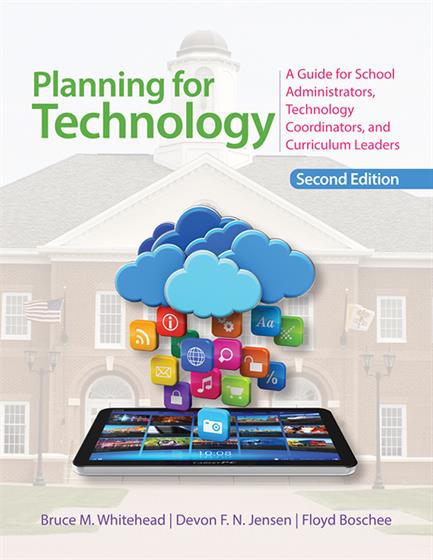Description
Stay a step ahead of technological change so that every student can flourish!
Students and classrooms are growing more technologically savvy every semester, which presents you with an essential choice: Will you let these learning tools sit idle, or will you unleash the power of technology for your students and staff?
The first edition of Planning for Technology created leaders who empowered students to master the technological tools now required for success. This second edition will prepare you for the coming decade, when the pace of change will be much faster. In addition to the core methods and exercises, this book includes:
- Revisions addressing essential digital developments of the past decade that school leaders must learn to utilize
- New content covering guidelines for addressing the new Common Core State Standards, distributed leadership, adult learning theory, digital citizenship, cybersecurity, cloud computing, and more
- A new chapter on creating a “culture of technology” that goes beyond user manuals to create responsible, tech-savvy students
Technology is no longer optional—it is a requirement for success in the 21st century. Planning for Technology is the go-to resource for ensuring your students thrive.
"This book is about how to plan for technology, promote it, pay for it, and take steps to ensure that it really is improving student achievement. This book makes school administrators consider more thoughtfully how they are using technology for teaching and learning and why. It helps the reader understand how to plan for and implement technology in a more effective way."
—Patricia L. Tucker, Retired Regional Superintendent
District of Columbia Public Schools, DC
"The reflective activities at the end of every chapter prompt leaders to think about diverse areas they may have not thought about before."
—Frances L. O’Reilly, Assistant Professor of Educational Leadership
The University of Montana-Missoula
Key features
- Real-life examples from schools that have future-proofed their technology infrastructure
- Lists of funding sources and a grant proposal activity
- Guidance on how to successfully create a new culture of technology in schools
- Models for conceiving the 21st century educational experience such as: Shifting Minds out of Canada, the Partnership for 21st Century Skills, the OECD Framework for 21st Century Learning, and the NETS-S Model for 21st Century Competencies
- Technology Plan Evaluation Activity to aid readers in assessing their level of Technology Maturity
- Technology Planning Analysis Rubric to help administrators assess the soundness of their plan.
- Reflective Activities at the end of each chapter




